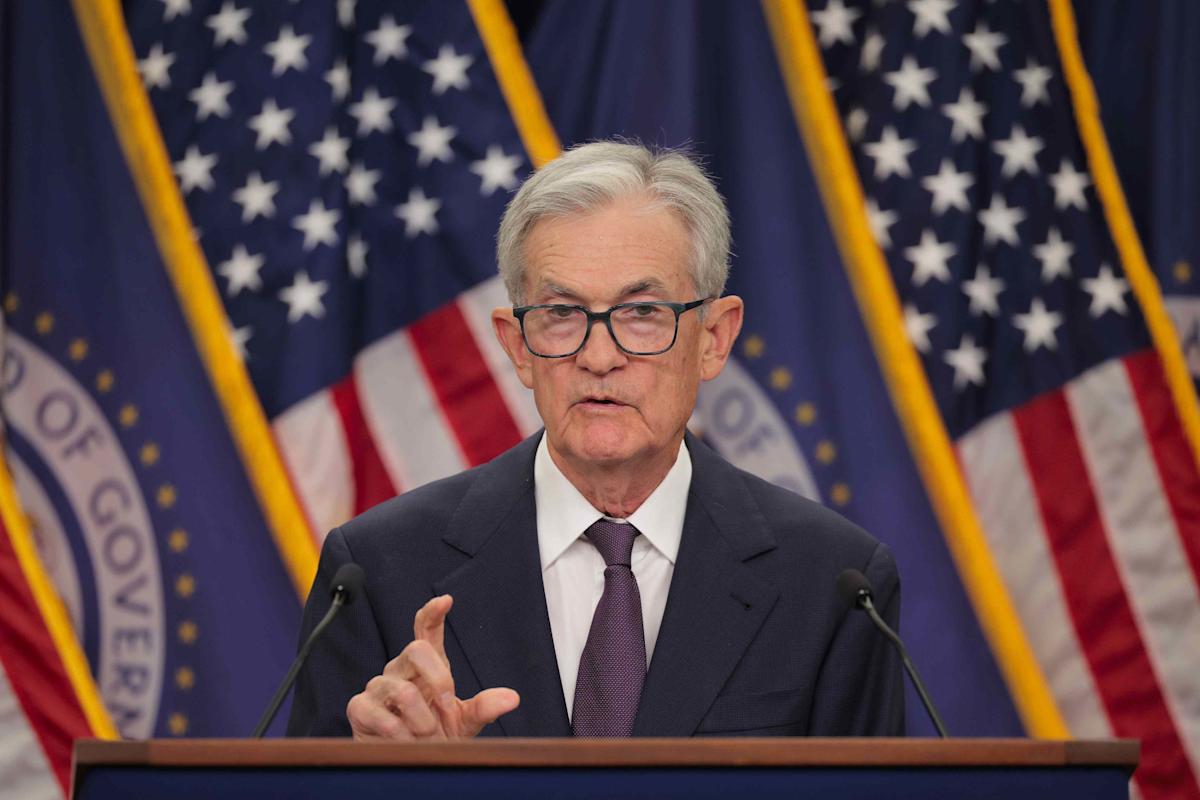Powell Warns The Fed Faces a ‘Challenging’ Situation in Setting Interest Rates
Chip Somodevilla / Getty Images
The Fed continues to emphasize that it currently has no “risk-free” path.
-
Fed Chair Jerome Powell said the economy is pulling the central bank’s policy in two different directions, as the job market weakens while inflation remains elevated.
-
The central bank has started cutting interest rates, but could change its strategy if inflation gets worse.
-
Two other Fed policymakers spoke Tuesday, with one advocating for gradual rate cuts and the other for more decisive cuts.
Federal Reserve Chair Jerome Powell said there is no easy answer as the Fed grapples with whether to use its key interest rate to fight inflation or to boost the struggling job market.
Powell covered familiar ground speaking Tuesday at an event in Rhode Island, highlighting the dilemma of the Fed’s dual mission to control prices and boost employment at the same time. Powell gave no indication as to when the Fed would reduce rates again, after cutting last week for the first time this year.
When inflation is above the Fed’s goal of a 2% annual rate, the central bank’s playbook calls for it to raise the fed funds rate, pushing up borrowing costs on short-term loans. When the job market deteriorates, it will normally lower interest rates to boost the economy. Last week, policymakers decided lowering the rate in the face of high inflation was the lesser of two evils. But Powell said the Fed’s strategy could change based on economic data in the coming months.
“We only have one tool, which is monetary policy—really, interest rates—and [the situation] is calling for different answers,” Powell said. “It’s a very difficult policy environment when your two goals are telling you two different things, you’ve got to make a compromise.”
Fed officials commented on the key interest rate that influences borrowing costs on all kinds of loans, especially short-term loans such as credit cards and car loans. The Fed has started lowering interest rates to stabilize the faltering job market, but may need to keep them high if elevated inflation persists.
So far, the compromise has been to lower rates and take pressure off of the job market. Powell said the Fed is working under the assumption that President Donald Trump’s tariffs will cause a one-time boost to prices rather than setting off a cycle of persistent price hikes, or in other words, high inflation. But Powell said he and other Fed officials are closely watching data for signs that’s not the case.
Powell said the Fed’s models, as well as those of other forecasters, predicted “the one-time increase from the tariffs will be done, and you’ll be back to the non-tariff-related inflation, which should be much closer to our 2% goal” after a year or more.
The Fed’s preferred measure of inflation, the Personal Consumption Expenditures price index (excluding food and energy prices) is forecast to have increased 2.9% over 12 months in August. Of that, Powell estimated 0.3% to 0.4% was due to tariffs. In other words, without President Donald Trump’s sweeping import taxes, inflation would be much closer to the 2% goal.



Leave a Comment
Your email address will not be published. Required fields are marked *